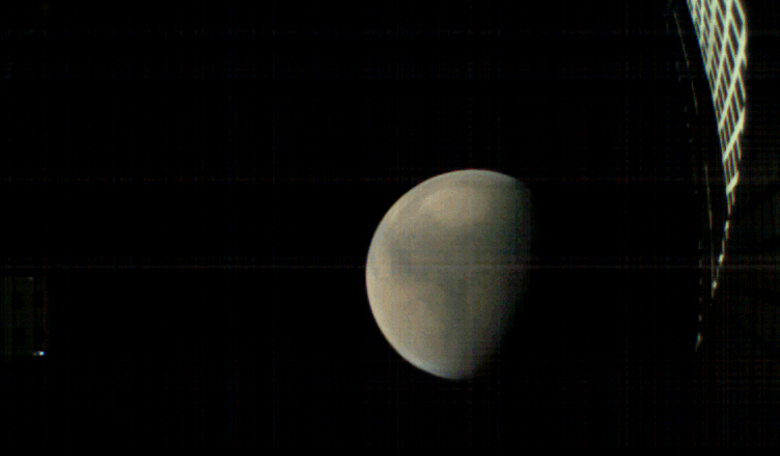Before the pair of briefcase-sized spacecraft known collectively as MarCO launched last year, their success was measured by survival: If they were able to operate in deep space at all, they would be pushing the limits of experimental technology.
Now well past Mars, the daring twins seem to have reached their limit. It's been over a month since engineers have heard from MarCO, which followed NASA's InSight to the Red Planet. At this time, the mission team considers it unlikely they'll be heard from again.
MarCO, short for Mars Cube One, was the first interplanetary mission to use a class of mini-spacecraft called CubeSats. The MarCOs - nicknamed EVE and WALL-E, after characters from a Pixar film - served as communications relays during InSight's landing, beaming back data at each stage of its descent to the Martian surface in near-real time, along with InSight's first image. WALL-E sent back stunning images of Mars as well, while EVE performed some simple radio science.
All of this was achieved with experimental technology that cost a fraction of what most space missions do: $18.5 million provided by NASA's Jet Propulsion Laboratory in Pasadena, California, which built the CubeSats.
WALL-E was last heard from on Dec. 29; EVE, on Jan. 4. Based on trajectory calculations, WALL-E is currently more than 1.6 million kilometres (1 million miles) past Mars; EVE is farther, almost 3.2 million kilometres (2 million miles) past Mars.
The mission team has several theories for why they haven't been able to contact the pair. WALL-E has a leaky thruster. Attitude-control issues could be causing them to wobble and lose the ability to send and receive commands. The brightness sensors that allow the CubeSats to stay pointed at the Sun and recharge their batteries could be another factor. The MarCOs are in orbit around the Sun and will only get farther away as February wears on. The farther they are, the more precisely they need to point their antennas to communicate with Earth.
The MarCOs won't start moving toward the Sun again until this summer. The team will reattempt to contact the CubeSats at that time, though it's anyone's guess whether their batteries and other parts will last that long.
Even if they're never revived, the team considers MarCO a spectacular success.
"This mission was always about pushing the limits of miniaturized technology and seeing just how far it could take us," said Andy Klesh, the mission's chief engineer at JPL. "We've put a stake in the ground. Future CubeSats might go even farther."
A number of the critical spare parts for each MarCO will be used in other CubeSat missions. That includes their experimental radios, antennas and propulsion systems. Several of these systems were provided by commercial vendors, making it easier for other CubeSats to use them as well.
More small spacecraft are on the way. NASA is set to launch a variety of new CubeSats in coming years.
"There's big potential in these small packages," said John Baker, the MarCO program manager at JPL. "CubeSats - part of a larger group of spacecraft called SmallSats - are a new platform for space exploration that is affordable to more than just government agencies."











